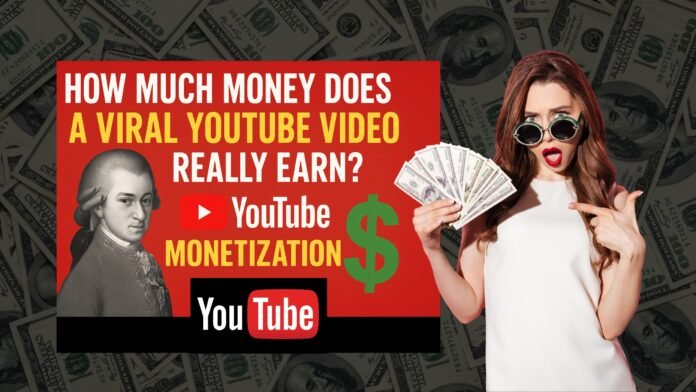If you’ve ever dreamed of striking YouTube gold, you’ve probably wondered: “How much money do viral videos actually make?”
Let’s take a fascinating real-world example — a Mozart music video that’s racked up over 277 million views on YouTube — and break down how YouTube monetization really works.
The video in question is Mozart – Symphony No. 40 in G minor, K. 550, published by the channel HALIDONMUSIC, a label known for classical music. It’s a massive success — hundreds of millions of views on a centuries-old masterpiece. But how much cash does that translate to?
YouTube’s Monetization Model: The Basics
Before we crunch numbers, it’s important to understand how YouTube pays creators.
YouTube doesn’t pay by view — it pays by ad impressions. Every time an ad appears before, during, or after a video, advertisers pay YouTube. Then, YouTube shares a portion of that revenue with the creator.
- CPM (Cost Per Mille): What advertisers pay for 1,000 ad impressions.
- RPM (Revenue Per Mille): What you, the creator, actually earn per 1,000 views, after YouTube takes its cut and after accounting for unmonetized views.
- YouTube’s cut: Around 45% of total ad revenue.
- Ad coverage: Not every view generates an ad — ad blockers, regional restrictions, or “ad-free” viewers reduce that rate.
How Much Money for 277 Million Views?
Let’s use some real-world averages. Across YouTube,
RPMs typically range from $0.50 to $5.00 USD, depending on the niche and audience location. Classical music tends to fall in the low-to-mid range since advertisers pay less than they do for finance, tech, or education content.
| RPM | Estimated Earnings |
|---|---|
| $0.50 | $138,500 |
| $1.00 | $277,000 |
| $3.00 | $831,000 |
| $5.00 | $1,385,000 |
In short, that Mozart video could have earned anywhere from about $200,000 to over $1 million, depending on ad rates, audience geography, and ad coverage. Most likely, the real number sits somewhere in the $300K–$600K range — still incredible for one video of a 230-year-old symphony.
Why Geography and Audience Matter
If your viewers are mostly in the U.S., Canada, U.K., or Europe, you’ll earn more.
Advertisers in those regions pay higher CPMs. If most of your traffic comes from Asia, Latin America, or Eastern Europe, your CPM — and therefore your earnings — will likely be lower.
For classical music, which attracts a global audience, this means a wide variance in ad rates. A large portion of views might come from countries where ad rates are low, bringing down the overall average RPM.
Why Classical Music Still Wins
Even though classical music doesn’t command high ad rates, it wins through evergreen value. Unlike trending videos that spike and vanish, Mozart’s symphonies never go out of style. That means steady traffic for years, even decades.
The HALIDONMUSIC channel, with hundreds of such uploads, earns ongoing passive income from a catalog of timeless content. This is the power of long-tail monetization — steady, compounding revenue over time.
Tools to Estimate YouTube Revenue
Want to calculate how much your own videos might earn? Try these free tools:
- Influencer Marketing Hub’s YouTube Money Calculator
- Social Blade’s YouTube Estimator
- TubeBuddy Monetization Calculator
The Takeaway: Monetization Is a Marathon
Viral success like this Mozart video is rare, but it shows what’s possible when great content meets a global audience. YouTube monetization isn’t about luck — it’s about consistency, niche focus, and creating content with long-term replay value.
So, whether you’re uploading gaming videos, how-tos, or music — remember:
- Learn your niche’s CPM and RPM range.
- Optimize for watch time and engagement.
- Upload content that can earn for years, not just weeks.
If Mozart can pull in millions of dollars centuries after his death, just imagine what you can do with your own creative genius today.











